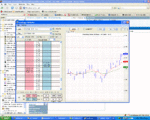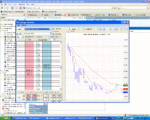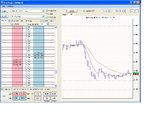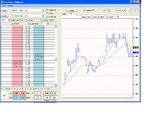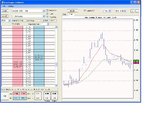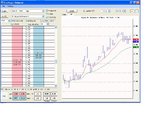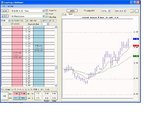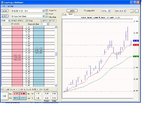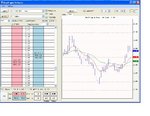a_gnome
Well-known member
- Messages
- 434
- Likes
- 15
I've been meaning to start this journal for some time, finally I seem to have got around to it. I am doing it for purely selfish reasons: actually writing stuff out forces me to think about it and confront the issues involves. This is largely a psychological journey for me so it's going to be rather self-indulgent and I make no apologies about that. I hope that in addition readers may find it useful but that's not it's prime objective.
Firstly a bit of background information about myself: I have been interested in trading for a long time. In fact I have developed a business around it, combining my knowledge of trading with my programming skills offering consultancy/programming services to traders and occasionally city institutions all over the world. I have been doing this for some 14 years now and have been making a good living from it. For the last year and a half I have been working with someone else developing trading strategies for a very large fund. We license our strategies out to the fund in exchange for management and performance fee remuneration. This is going pretty well with the money under management measured in millions. So I know all about mechanical strategies and what works and what doesn't.
Now, what originally got me interested in trading was the idea of being able to make money for comparatively little effort. I was originally working in academia and wanted to earn money so that I could continue my research. I naively thought that for a "brain-box" like me it couldn't be that hard! That's what got me started all those years ago. Whilst I now make a living from these strategies with the fund I do still hanker after a more hands-on approach. Strategies that are suitable for a fund have to have the potential for large capacity so that one can trade millions with them. There's no point in doing something which can only trade $100k on it no matter how good it is. The trouble is that I am now rather disconnected from the market itself, spending my days doing the research on new strategies so I don't even need to look at a market. I have traded my account on and off over the years and always enjoy the challenge of "figuring out the markets". I would still like to be able to trade in a more hands-on way along-side my fund work and the purpose of this journal is to promote this goal.
My trading has historically always gone the same way: I've started out ok, have always trading sensibly with regards to size but once I've had a few losers I find that I just keep on losing. Being quite cautious I then stop trading fairly quickly. This has happened on several occasions. I did also have a rather ignominious go at trading stocks which was after the .com bubble had burst. My strategy involved buying tech stocks averaging down where necessary. Needless to say I wiped out the account!
I did paper trade for several months a while ago with good success. I had purchased a trading course and using their methodology I was making money. However I realised that there was no way that I would be able to make a living purely on the amount of profits that I was making so I needed to find some other source of income. At that time my consultancy had gone rather quiet so I took a 6 month contract in the city to earn a bit of dosh. I have realised that given I have a wife and three children to support, I'm not going to be able to make enough of a living from this kind of trading to support them so if I am to get it started I am going to need to have some other kind of income as well. With the success of the fund work I now have this so I am once again looking at realising this goal, hence this journal.
People are often surprised that for someone with a scientific background such as mine (D.Phil in theoretical atomic physics at Oxford) and with my programming skills, that I still seem to be drawn to a more discretionary approach. I am a firm believer that the individual trader who is disciplined and who can read the markets should have an edge over a purely mechanical approach. The key aspects of this though are the discipline and the actual ability to read the markets. The great advantage of a mechanical approach is that it gets in every trade opportunity without fail - the discretionary trader still needs to do this, he/she just needs to know when the conditions suit and when they don't. The risk is that they talk themselves out of potential trades for reasons other than objective assessment of the market conditions, which is where the psychology comes in.
So why have I called this the "Kung Fu of Trading"? The reason for this is that "Kung Fu" literally means a cultivated skill or something that one works hard at (*) and I know that to be successful at trading it's all about what's going on inside rather than outside. I know all that I need to know about the mechanics of trading already, it's just the internal aspects that I need to have in place and the aim of this journal is to work towards this. In the following entries I shall talk more about how I intend to do this.
(*) Thanks to Shadowninja for pointing out that it didn't actually mean "personal development" as I had originally stated.
Firstly a bit of background information about myself: I have been interested in trading for a long time. In fact I have developed a business around it, combining my knowledge of trading with my programming skills offering consultancy/programming services to traders and occasionally city institutions all over the world. I have been doing this for some 14 years now and have been making a good living from it. For the last year and a half I have been working with someone else developing trading strategies for a very large fund. We license our strategies out to the fund in exchange for management and performance fee remuneration. This is going pretty well with the money under management measured in millions. So I know all about mechanical strategies and what works and what doesn't.
Now, what originally got me interested in trading was the idea of being able to make money for comparatively little effort. I was originally working in academia and wanted to earn money so that I could continue my research. I naively thought that for a "brain-box" like me it couldn't be that hard! That's what got me started all those years ago. Whilst I now make a living from these strategies with the fund I do still hanker after a more hands-on approach. Strategies that are suitable for a fund have to have the potential for large capacity so that one can trade millions with them. There's no point in doing something which can only trade $100k on it no matter how good it is. The trouble is that I am now rather disconnected from the market itself, spending my days doing the research on new strategies so I don't even need to look at a market. I have traded my account on and off over the years and always enjoy the challenge of "figuring out the markets". I would still like to be able to trade in a more hands-on way along-side my fund work and the purpose of this journal is to promote this goal.
My trading has historically always gone the same way: I've started out ok, have always trading sensibly with regards to size but once I've had a few losers I find that I just keep on losing. Being quite cautious I then stop trading fairly quickly. This has happened on several occasions. I did also have a rather ignominious go at trading stocks which was after the .com bubble had burst. My strategy involved buying tech stocks averaging down where necessary. Needless to say I wiped out the account!
I did paper trade for several months a while ago with good success. I had purchased a trading course and using their methodology I was making money. However I realised that there was no way that I would be able to make a living purely on the amount of profits that I was making so I needed to find some other source of income. At that time my consultancy had gone rather quiet so I took a 6 month contract in the city to earn a bit of dosh. I have realised that given I have a wife and three children to support, I'm not going to be able to make enough of a living from this kind of trading to support them so if I am to get it started I am going to need to have some other kind of income as well. With the success of the fund work I now have this so I am once again looking at realising this goal, hence this journal.
People are often surprised that for someone with a scientific background such as mine (D.Phil in theoretical atomic physics at Oxford) and with my programming skills, that I still seem to be drawn to a more discretionary approach. I am a firm believer that the individual trader who is disciplined and who can read the markets should have an edge over a purely mechanical approach. The key aspects of this though are the discipline and the actual ability to read the markets. The great advantage of a mechanical approach is that it gets in every trade opportunity without fail - the discretionary trader still needs to do this, he/she just needs to know when the conditions suit and when they don't. The risk is that they talk themselves out of potential trades for reasons other than objective assessment of the market conditions, which is where the psychology comes in.
So why have I called this the "Kung Fu of Trading"? The reason for this is that "Kung Fu" literally means a cultivated skill or something that one works hard at (*) and I know that to be successful at trading it's all about what's going on inside rather than outside. I know all that I need to know about the mechanics of trading already, it's just the internal aspects that I need to have in place and the aim of this journal is to work towards this. In the following entries I shall talk more about how I intend to do this.
(*) Thanks to Shadowninja for pointing out that it didn't actually mean "personal development" as I had originally stated.
Last edited:


